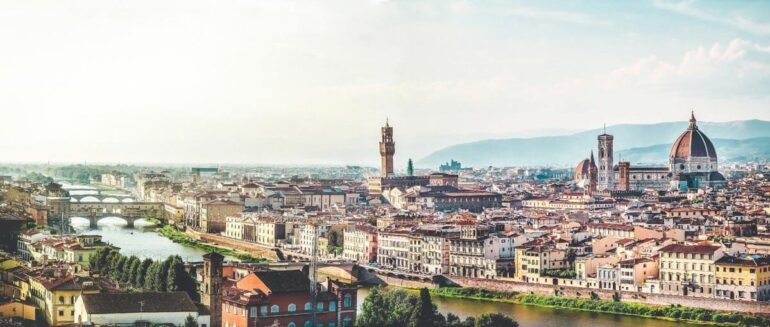The best neighbourhoods in Florence
You might be able to walk across Florence easily as compared with larger Italian cities like Rome or Naples, but that doesn’t mean it’s lacking in distinctive neighborhoods. Each corner of Florence is packed with a combination of world famous art and historical treasures alongside hidden gems like the perfect rooftop bar with a view or that unique shop where you’ll find something you love. This guide is just a taste to get you started. As with any city, her true character takes years to uncover layer by layer. So hit the streets, slow down, get lost down an inviting alleyway, peek through that doorway, say hello. Florence is waiting.
CENTRO STORICO: THE DUOMO AND PIAZZA DELLA SIGNORIA
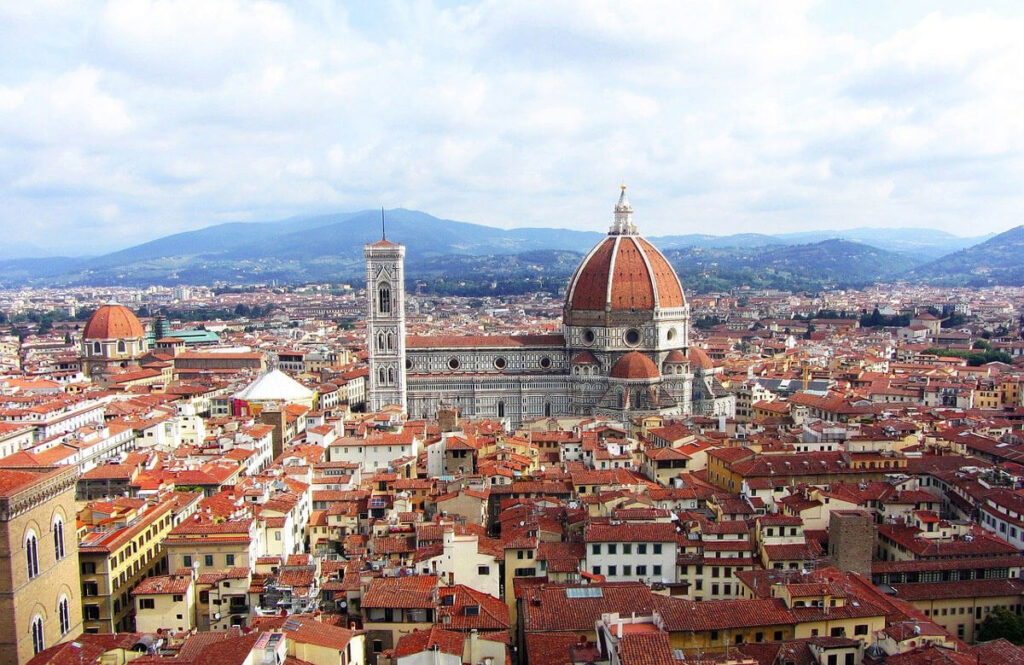
The historic center of Florence becomes immediately apparent on any map as the dense cluster of streets in the form of a rectangle just north of the Ponte Vecchio. The city was founded here with true Roman-style precision in the 1st century BC and it still retains the original grid pattern. The number of cultural and artistic sights in this district are higher than in the entirety of many cities around the world so for our purposes, I’ll keep it brief.
After visiting the big hitters like the Piazza del Duomo, Orsanmichele, Palazzo Vecchio and the Uffizi Gallery, check out the rotating exhibitions of classical and contemporary art at Palazzo Strozzi, the medieval tower house that is Palazzo Davanzati and the frescoes by Ghirlandaio in the Basilica di Santa Trinita.
Via Tornabuoni is world famous for high fashion shopping and here you’ll find all the big name brands while Via Calzaioli is always packed with shoppers. Fashion lovers can also visit the Salvatore Ferragamo museum and the Gucci Museum & Boutique: Gucci Garden.
Start your day with a coffee and pastry in one of the historic bars in Piazza Repubblica (I love Bar Gilli). To relax with a view over the Piazza Repubblica, head to Florence’s big department store Rinascente’s rooftop bar. Grab a drink and a selection of delectable finger sandwiches at Procacci on Via de’ Tornabuoni, 64R (try the truffle ones with a glass of Franciacorta) or a glass of wine at famous Cantina Antinori on Piazza degli Antinori, 3.
SANTA MARIA NOVELLA
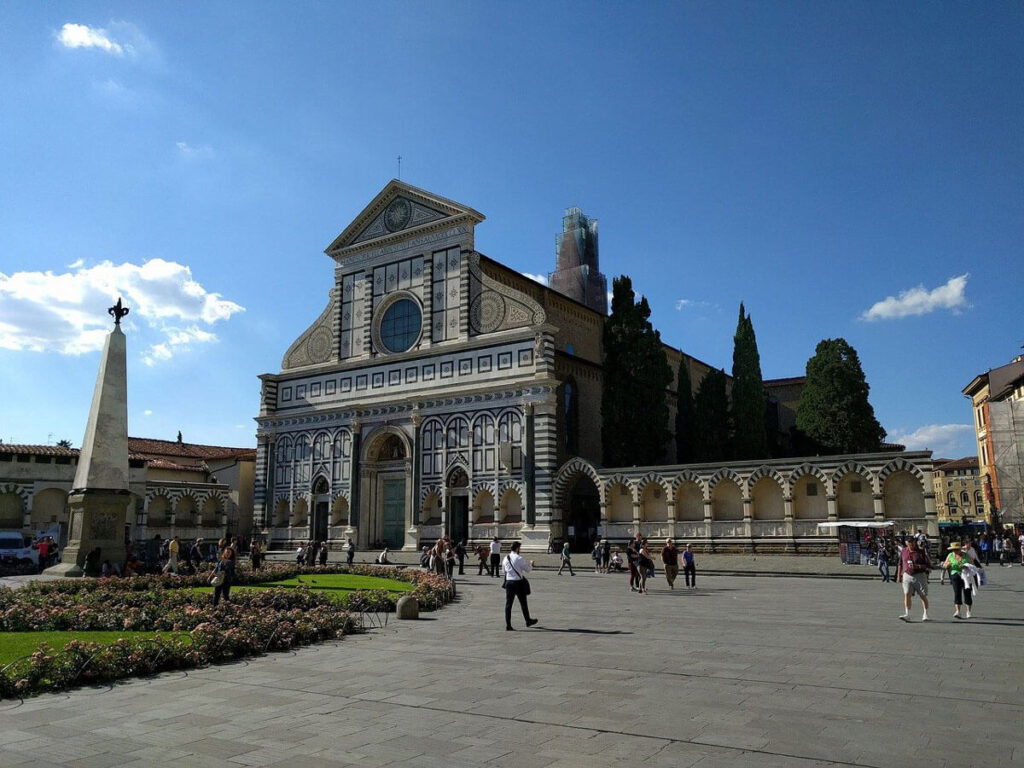
This neighborhood is named after its 15th century marble faced church and it’s where you’ll disembark in Florence proper if you are coming into the city by train. North of the Arno and west of the centro storico, it was historically the neighborhood of the Dominican order. The Basilica of Santa Maria Novella is a treasure trove for Renaissance art history lovers (Giotto, Ghirlandaio, Brunelleschi, Lippi and more) while modern art aficionados can check out the Museo del Novecento across the spacious piazza.
One of my favorite spots to visit in this neighborhood is the Officina Profumo Farmaceutica di Santa Maria Novella – opened in 1612, it’s one of the oldest pharmacies in the city and probably the most lavish. You can find perfumes, soaps, and medicines brewed according to ancient traditions and (all the way in the back) a rather hidden little tea room.
Anywhere that combines books with a cozy caffè is a must for me, so don’t miss Todo Modo bookshop where you can find books in English and Italian, a caffe tucked away inside and social initiatives like Storytellers Florence. Sei Divino has you covered for casual wine and dine in a cozy enoteca and Il Latini (Via dei Palchetti, 6R) is one of the more famous Florentine restaurants in the area for hearty Tuscan fare and the famous Bistecca Fiorentina.
SAN LORENZO
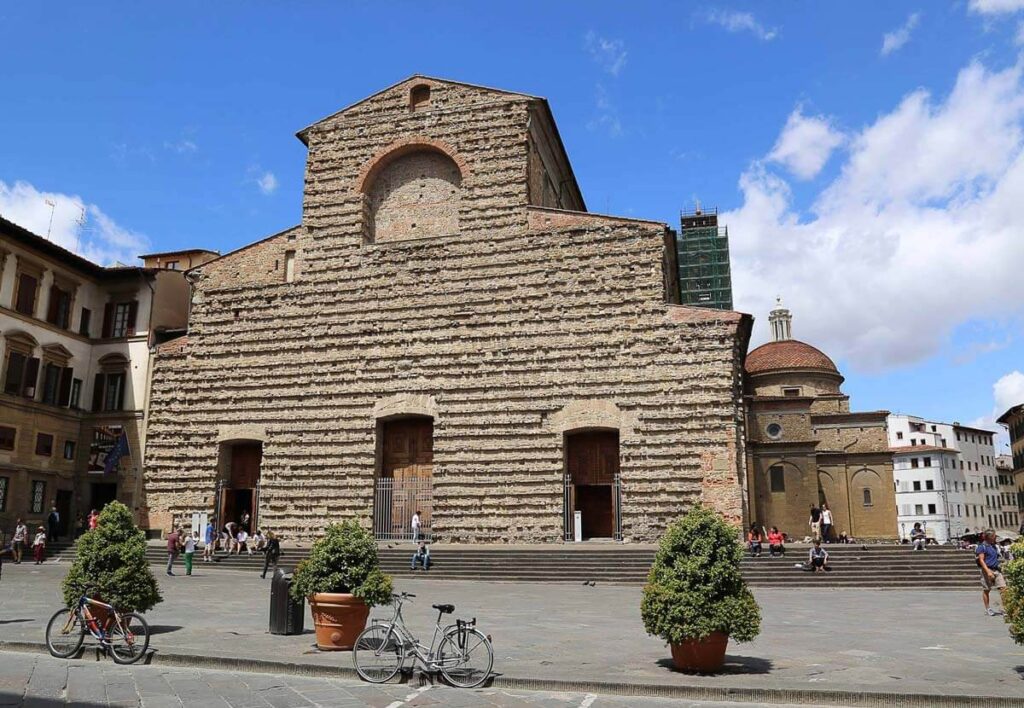
This neighborhood bustles around the oldest market in Florence, a large steel and glass structure rising over the awnings of the leather market stalls. It’s less polished and perfect than most of the rest of Florence, but as a tour guide, it contains some of my favorite places to visit: the Medici Chapels where the lavish Prince Chapels contrast with Michelangelo’s “Essay on Architecture” in the new sacristy of Basilica of San Lorenzo.
The San Lorenzo Leather market and surrounding stores offer endless jackets, bags and souvenirs, though it’s more and more aimed at the tourist crowd so you might want to look further afield for more authentic leather goods with our Guide to Italian Leather.
SimBIOsi (Via de’ Ginori, 58R/60R) marries rustic-chic with natural and bio-based dishes in their two restaurant locations: one for their pastas and second courses, and one for their Neapolitan-style pizza. La Menagere (Via de’ Ginori, 8/R) has a little bit of everything: you can grab a centrifuga and work on your laptop, go for lunch or dinner, or linger over a cocktail at night and listen to jazz.
SANTISSIMA ANNUNZIATA
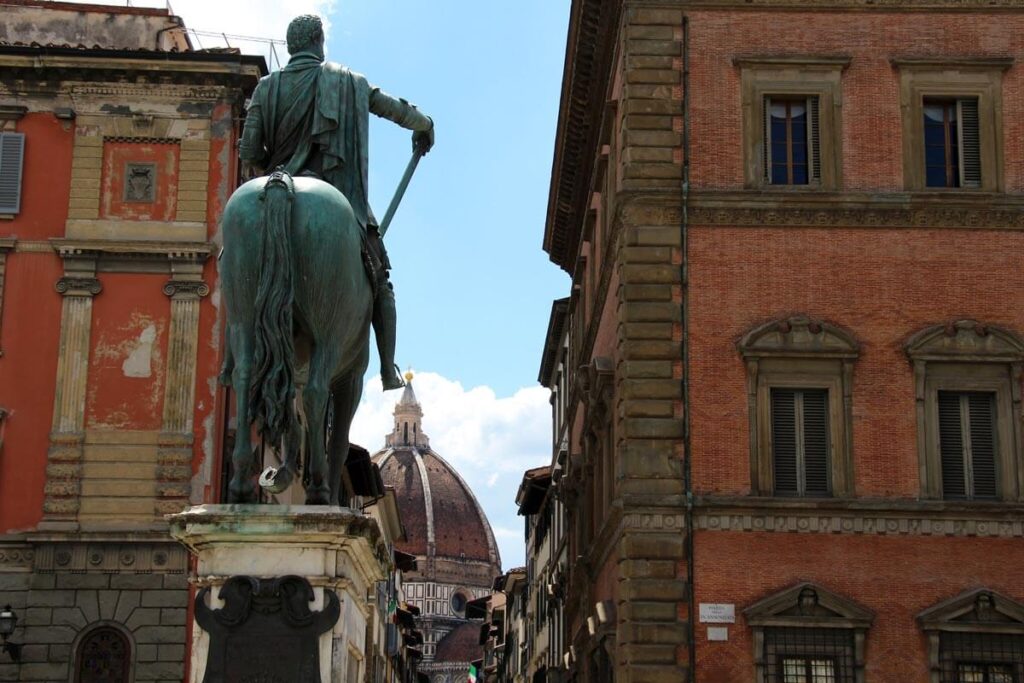
Just to the east of San Lorenzo and north of the Duomo, you’ll almost certainly find yourself in this slice of Florence to visit Michelangelo’s David located in the Accademia Gallery. But also be sure to pop just a few blocks down to the Basilica of Santissima Annunziata. This is one of the more active local churches in the area where you could attend mass or wait to peek in between services at this exquisitely over the top interior.
My favorite rare and antique book shop in Florence is hidden in plain sight – Libreria Antiquaria Gozzini (Via Ricasoli, 49) is located right across from the Academia Gallery. Daniela Meza Sigala’s art gallery (Via dei Servi, 111) is where the artist herself can be found at the back of the shop, working on whimsical paintings inspired by Florence.
Have a coffee and a cremino (traditional pastry filled with cream) at Robiglio on Via dei Servi, 112 (one of my favorites in the city) or head to the hidden Museo degli Innocenti’s rooftop caffe (Piazza della Santissima Annunziata, 13) for a great view over the rooftops of Florence including the Duomo.
SANT’AMBROGIO
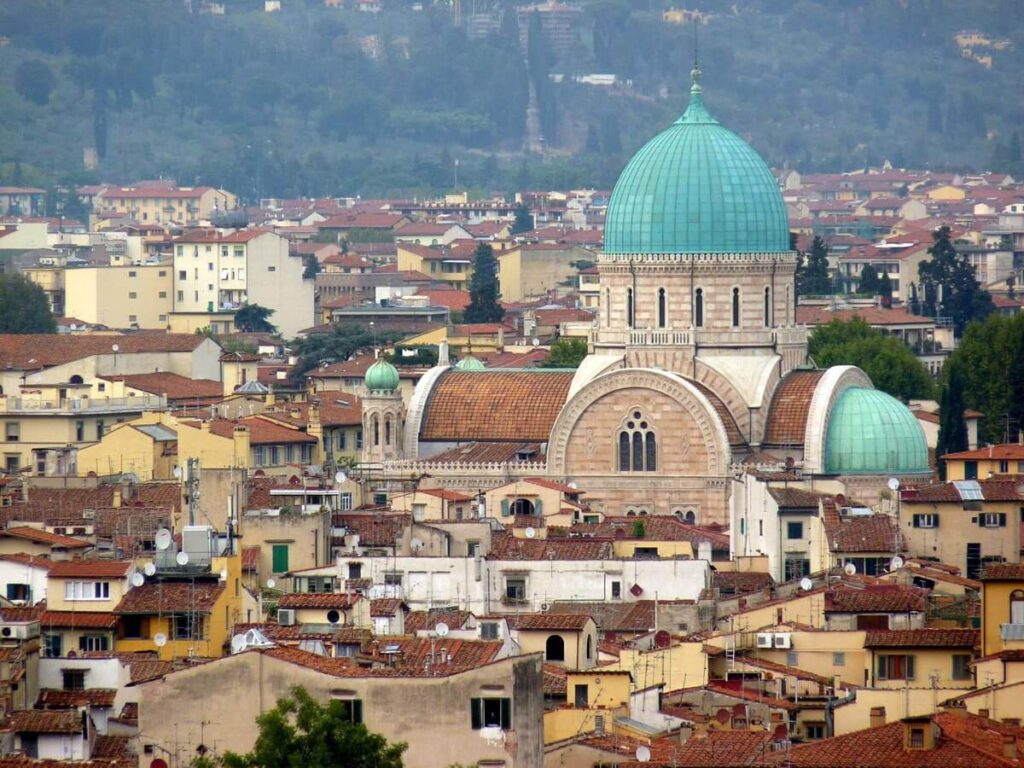
Continuing into the eastern-most corner of downtown Florence, you’ll find yourself in an area of the city where the souvenir shops thin out and a local vibe permeates the little streets. This is also the new Jewish district of Florence, centering of course around the Moorish style Synagogue of Florence, one of the largest in Europe.
The Sant’Ambrogio market might be less famous than the San Lorenzo one but this is where you’ll find more locals shopping for their daily produce and a more authentic vibe. Peruse the beautiful ceramics at Sbigoli Terrecotte (Via Sant’Egidio, 4) where the family has been perfecting their craft since 1857 (be sure to take a peek into the backroom studio). Antique lovers should head to the Mercato delle Pulci, the local flea market open Monday through Saturday.
Take a seat outside and grab a coffee with friends at Cibreo (Via Andrea del Verrocchio, 5R). They run a caffe, a trattoria and a fancier restaurant all within a few steps of each other so if you’re not careful you could end up feasting in this corner of Florence from dawn til dusk.
SANTA CROCE
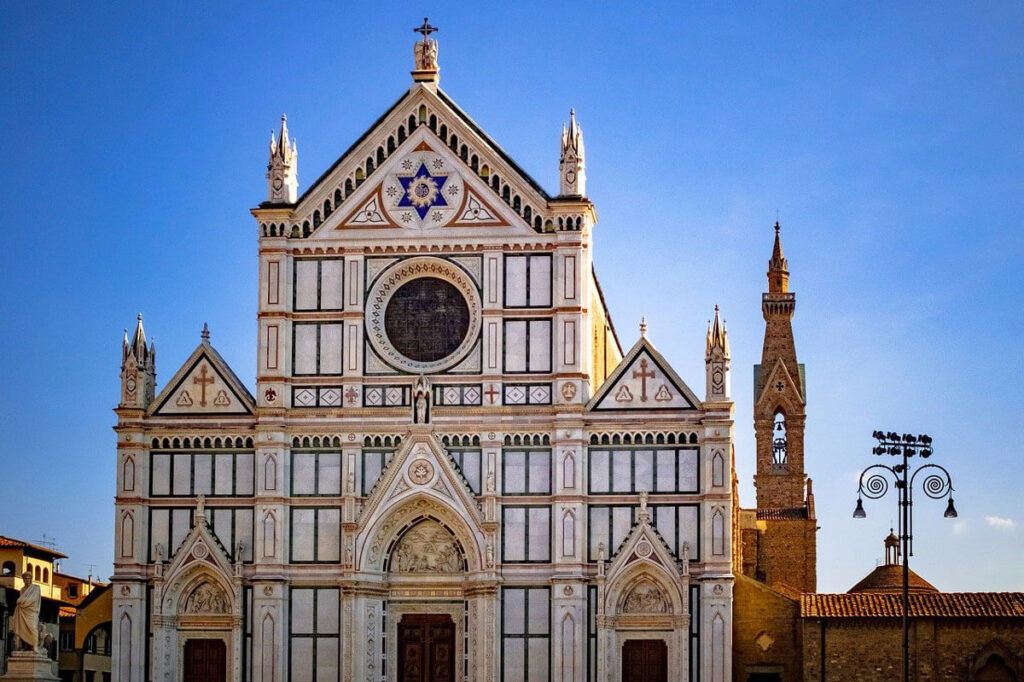
Santa Croce was famous for its leather processing which once made it one of the smellier parts of town (we’re talking like 500 years ago) and now makes it jam packed with leather shops (some of dubious quality). The main attraction is the large Basilica of Santa Croce complex which houses the tombs of Michelangelo and Galileo under its sky high roof. Michelangelo fans would do well to check out the Casa Buonarotti to see numerous preparatory sketches by the artists and some of his very first pieces like the Battle of the Centaurs. Those interested in contemplating the universe should head to the Galileo museum.
The Florentine Leather school is something of a pilgrimage destination for those interested in the history of leather in 20th century Florence and to see artisans at their work tables. Florence Factory (Via dei Neri, 6/8) highlights work of Florentine artists and artisans that share a chic, contemporary vibe.
My favorite easy eating spot is Vivandiere (Via Torta, 6) where it’s best to order an assortment of their delicious little antipasti to share tapas-style. It’s not very Italian or Florentine but Melaleuca (Lungarno delle Grazie, 18) kills at the avocado-toast and cinnamon-roll style breakfasts that just hit the spot. If you’re looking for theater, head to the historic Teatro Verdi. While seat of the Tuscan Regional Orchestra they also feature an array of contemporary musical and theatrical performances. For drinks in an ex-jail turned hip bar, head to Le Murate (Piazza delle Murate).
The OLTRARNO
South of the Arno river, across any of Florence’s historic bridges, lies the Oltrarno or literally the “beyond the Arno” neighborhods. While this area was traditionally considered the less preferable neighborhood of workers and foreignors outside of the city walls, it’s now famous as the home of artisans and some of the city’s best restaurants.
SANTO SPIRITO

As soon as you cross the Ponte Vecchio or Santa Trinita bridges, the vibe is a little bit different: the streets are narrower, the shops a little smaller and more niche. You’re in Santo Spirito. The main square of the Santo Spirito district with its central fountain and leafy trees is one of the larger traditional piazzas in the city where you can just meet up with a friend and hang out. It’s dominated by the disarmingly modern-looking façade of Basilica di Santo Spirito that was never completed (don’t miss going inside). The imposing Palazzo Pitti and vast Boboli Gardens are a huge draw to this side of Florence and for natural history lovers, don’t miss La Specola which contains numerous stuffed creatures and wax anatomical models of the human body that aren’t for the squeamish.
Every second and third Sunday of the month you can find a market in Piazza Santo Spirito either dedicated to arts and crafts or to Artisan food products). When it comes to artisan markets, Santo Spirito really has you covered from the deliciously soft Madova gloves on the other side of the Ponte Vecchio (Via de’ Guicciardini, 1/) and Roberto Ugolini handcrafted men’s shoes (click here to our guide to Artisan Leather Shops and Markets in Florence). Officine Nora (Via dei Preti 2-4) is an exciting contemporary artisan co-working studio where you can look in on the workshops and buy handcrafted jewelry directly from the artists. Gallori Turchi is a family antique’s shop open 1942 on Via Maggio 14 where you can find all sorts of treasures from antique weapons to furniture, paintings and jewelry.
Stop for a simple sandwich or a coffee in the charming, vintage-style interior of SottArno and you may never want to leave (Instagrammers I’m talking to you). For an aperitivo with a view head to the 16th century Palazzo Guadagni Hotel and enjoy a spritz with a view over the rooftops. For a novelty with a centuries-old history, head to Babae (Via Santo Spirito, 21R), where they are using the ancient “wine window” to hand glasses of wine straight out to guests on the street.
SAN FREDIANO
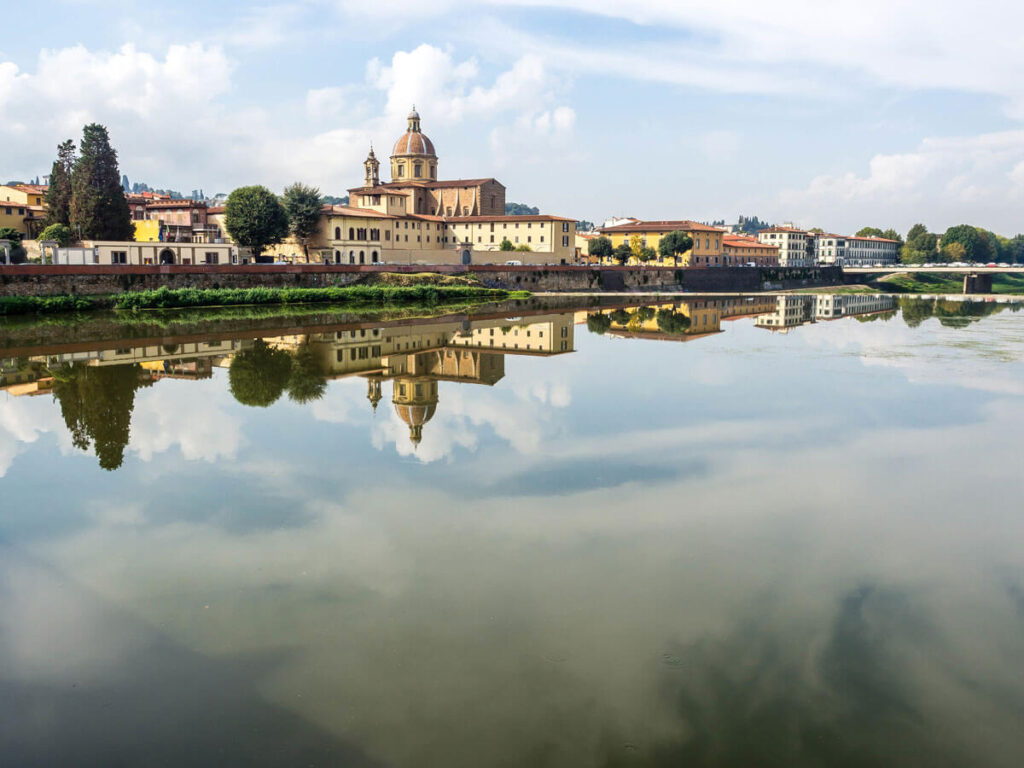
A few years ago, Lonely Planet named San Frediano one of the coolest neighborhoods in the world and without a doubt, it’s one of the more “real” neighborhoods in Florence, located west of the Santo Spirito district. It’s full of real artisan workshops – not the kind that cater to tourists with big showrooms but where you’ll find people at work in dusty, cluttered workspaces. It also holds one of the most stunning artistic gems of the city: The Brancacci Chapel located in the church of Santa Maria del Carmine. Its frescoes by Masaccio (among others) were massively influential in the story of art history.
The newly opened Female Artisans in Florence (Borgo San Frediano 131/r ) is part gallery space, part boutique and features the collaborative efforts of four superb craftswomen. The Old Silk factory on Via Lorenzo Bartolini, 4 is a little less welcoming (you have to make an appointment for a tour and it ain’t cheap) but I couldn’t leave these historic wholesale silk-makers and their 18th century looms off the list. Slightly outside of San Frediano proper is one of my favorite “hidden” spots in the whole city: Il Convento Caffe Letterario. Located on Via Giano della Bella, 20 in an ex-convent as the name suggests, this cultural space hosts artisan workshops, literary events, and has a quiet but charming caffe that will hopefully be reopening in the summer of 2021.
For a hole-in-the wall spot that serves up scrumptious Tuscan classics, head to l’Brindellone (Piazza Piattellina, 10) and try the hearty, stewed meat known as Peposo. Grab an innovative artisanal gelato at La Sorbetteria in the colorful Piazza Tasso or head to Mad Souls & Spirits (Borgo San Frediano, 36) for their to-die-for cocktails. In the land of Chianti, a good birra artigianale can be hard to find but head to Archea Brewery (Via dei Serragli, 44R) and you won’t be disappointed.
SAN NICCOLO
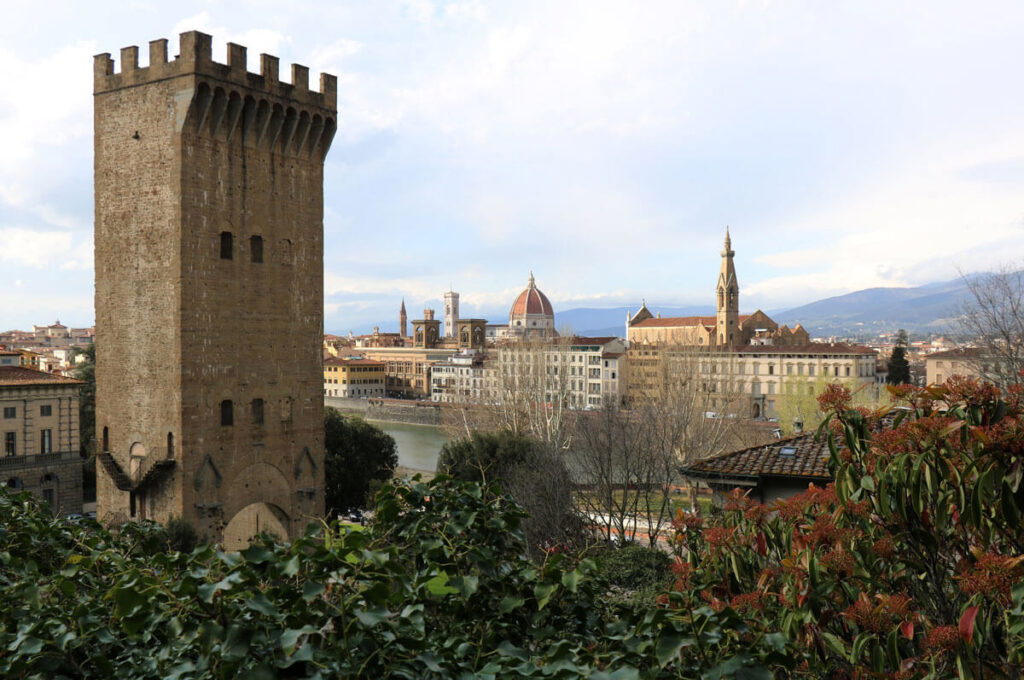
To the east of Santo Spirito and squeezed at the base of a hill and the banks of the Arno, San Niccolo is perhaps one of the most off the beaten track neighborhoods in Florence, presided over by the 14th century medieval tower that gives it its name.
San Niccolo may be small but it maintains a quiet, artistic vibe thanks in part to places like the workshop of street artist Clet Abraham (Via dell’Olmo, 8r) whose traffic sign centric street art can be seen all over the city. Busatti has been creating quality Tuscan linens and decorative items for the home since 1842 and while you can find their shops throughout the country, their location in Borgo Tegolaio, 51/R, in an ex-chapel hidden behind an unassuming shop door makes their Florence location special.
You’ll want to wear good walking shoes if you’re determined to discover this area: the views from the Bardini gardens are well worth the climb and the Bardini museum is a great off-the-beaten track find for those who may have been to Florence before and are looking for something unique. From this neighborhood, you can reach the stairway up to the Piazzale Michelangelo for a view back over the Arno river, the Brunelleschi’s dome and all of Florence.
INSPIRATION
The Best Things To See And Do In Florence


